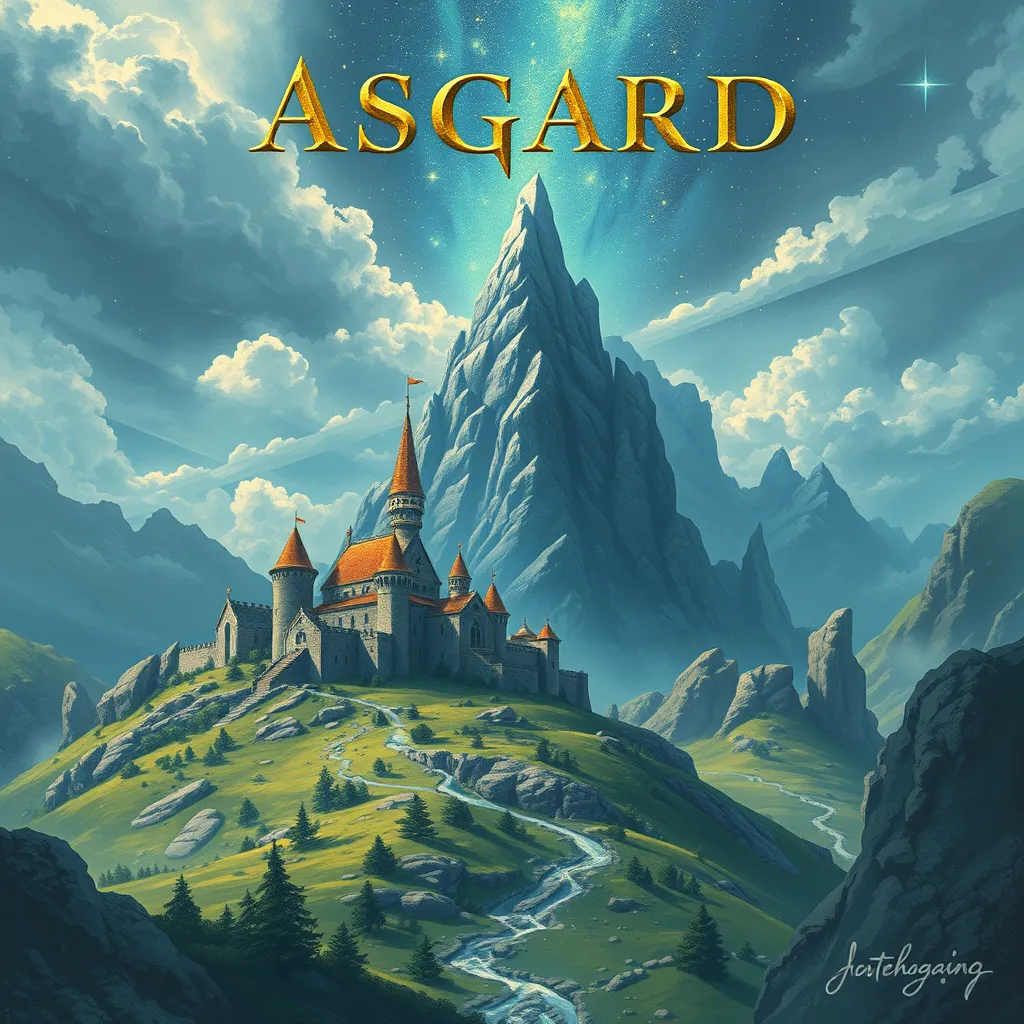
In the vast cosmos of Norse mythology, no realm shines brighter than Asgard, the majestic home of the Æsir tribe of gods. This celestial stronghold, whose name means “Enclosure of the Aesir,” stands as the ultimate model of order, law, and civilization in the universe. More than just a dwelling place for deities, Asgard represents a divine ideal and plays a central role in the Norse conception of the world’s creation and its prophesied end.
The Divine Fortress in the Sky
Asgard is described as a radiant realm located high in the heavens, connected to the world of humanity, Midgard, by the shimmering rainbow bridge known as Bifrost. This bridge was vigilantly guarded by the watchman god, Heimdall, who stood ready to sound his horn, Gjallarhorn, at the first sign of danger. The realm itself was a fortified city, surrounded by a great, incomplete wall, protecting its inhabitants from the chaotic forces that sought to destroy them.
Within Asgard’s walls lay the magnificent hall of Valhalla, where the god Odin presided over the souls of warriors who had died bravely in battle. These chosen warriors, the Einherjar, would feast and prepare for the final great battle of Ragnarök. Another hall, Fólkvangr, belonged to the goddess Freya, who received the other half of the slain. Asgard was not just a symbol of power but also a place of immense cultural importance, where the gods would gather to make fateful decisions about the cosmos.
The Nine Realms and the Cosmic Tree
Asgard is one of the Nine Worlds held in the branches and roots of Yggdrasil, the immense World Tree that forms the central axis of the Norse cosmos. The other realms include:
- Midgard: The “Middle Enclosure,” the world of humanity.
- Jotunheim: The chaotic homeland of the giants, the eternal foes of the gods.
- Vanaheim: The home of the Vanir gods, a tribe associated with fertility and magic.
- Alfheim: The luminous realm of the light elves, beings of great beauty.
- Svartalfheim: The subterranean world of the dwarves, master craftsmen who forged the gods’ most powerful weapons.
- Niflheim: A primordial world of ice, mist, and cold.
- Muspelheim: A primordial world of fire, home to the fire giant Surtr.
- Helheim: The gloomy underworld for those who did not die in battle, ruled by the goddess Hel.
This interconnected universe highlights Asgard’s role as the pinnacle of divine order, constantly under threat from the surrounding realms of chaos.
Asgard’s Echo in the Modern World
The powerful imagery of Asgard and the Norse cosmos continues to capture the modern imagination, finding new life in unexpected places. Its themes of building fortified realms and creating interconnected systems resonate strongly in the digital age. Just as the gods built their fortress, modern technologists are building decentralized digital realms. The concept of a secure, interconnected network mirrors the ancient vision of the Nine Worlds linked by Yggdrasil. This drive to create and protect value in new realms is a timeless pursuit, whether it’s the gods safeguarding their home or individuals seeking to secure their assets in a modern landscape, exploring new ways to manage value, for example, through platforms that allow you to buy BTC https://swapspace.co/buy-crypto/btc and other digital currencies.
Ragnarök: The Twilight of the Gods
Despite its power and splendor, Asgard was not destined to last forever. Norse mythology prophesies a cataclysmic event called Ragnarök, the “Fate of the Gods.” This series of events would culminate in a final, world-ending battle fought on the plains of Asgard itself. The fire giant Surtr would advance from Muspelheim to set the realm ablaze, and many of the major gods, including Odin and Thor, were fated to fall in battle. However, Ragnarök was not merely an end; it was also a cleansing and a rebirth. After the destruction, a new world would emerge from the sea, green and beautiful, and a new generation of gods would appear, carrying on the legacy of the old. The cycle of creation, destruction, and renewal was complete, with Asgard playing a pivotal role from beginning to end.
